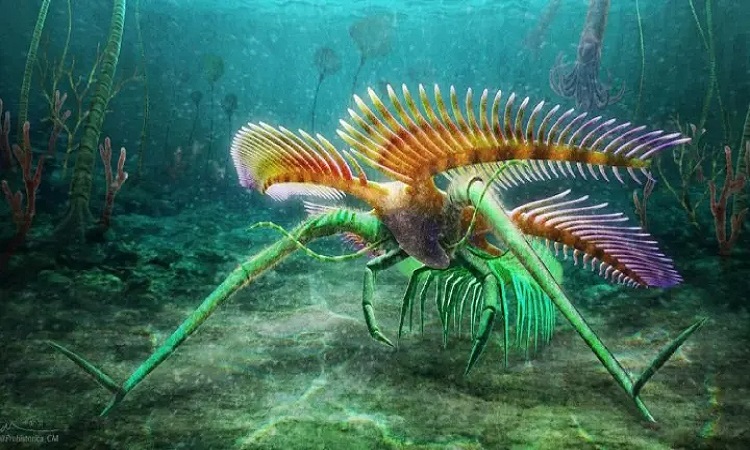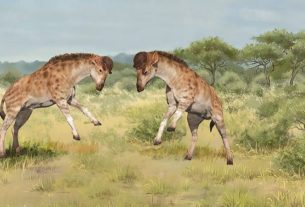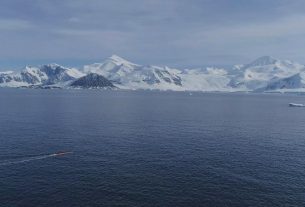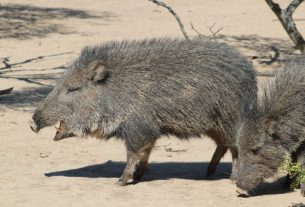A team of paleontologists announces the discovery of an “exceptionally well-preserved” ancient animal in southern Ontario. The specimen, which had no eyes, moved on the seabed by means of stilts. It evolved about 450 million years ago.
The vast majority of fossils are originally made of biosynthesized minerals, which facilitates their preservation. Conversely, soft tissues are much more likely to break down before the fossilization process begins. As a result, these types of organisms are underrepresented in historical records, hence the interest of this new study.
A blind creature on stilts
A team of paleontologists describes the discovery of several soft-bodied fossils near the eastern shore of Lake Simcoe, in southern Ontario (Canada). Among them was a well-preserved arthropod. Named Tomlinsonus dimitrii, the species represented by this specimen was part of an extinct group known as marrellomorphs that evolved about 450 million years ago during the Ordovician period.
Measuring about six centimeters long, the specimen featured a head adorned with two curved horns covered in feather-like spines. The animal’s segmented body resembles that of other arthropods, such as insects and spiders, and had multiple sets of segmented limbs, including a highly unusual pair of enlarged appendages.
“Under the head are this amazing pair of limbs that are extremely long and have foot-like projections at the terminal ends. We think this creature was most likely using them to make their way through the seabed,” says Joseph Moysiuk of the University of Toronto. “She also appeared to be blind, as he has no eyes at all.”
Buried in storm deposits
Prior to this excavation, marrellomorphs were primarily found at older fossil sites, such as the Middle Cambrian (between 505 and 510 million years old) Burgess Shale in the Canadian Rockies.
Similar to these shales, the Lake Simcoe Quarry was once submerged, incorporating a shallow tropical sea that covered much of what is now the country. Over millions of years and with the sandstone of storms, the carbonate-dominated seabed has gradually become covered with sediments, quickly burying and preserving organisms evolving at the bottom. This was particularly the case for this one.
Details of the study are published in the Journal of Paleontology.




